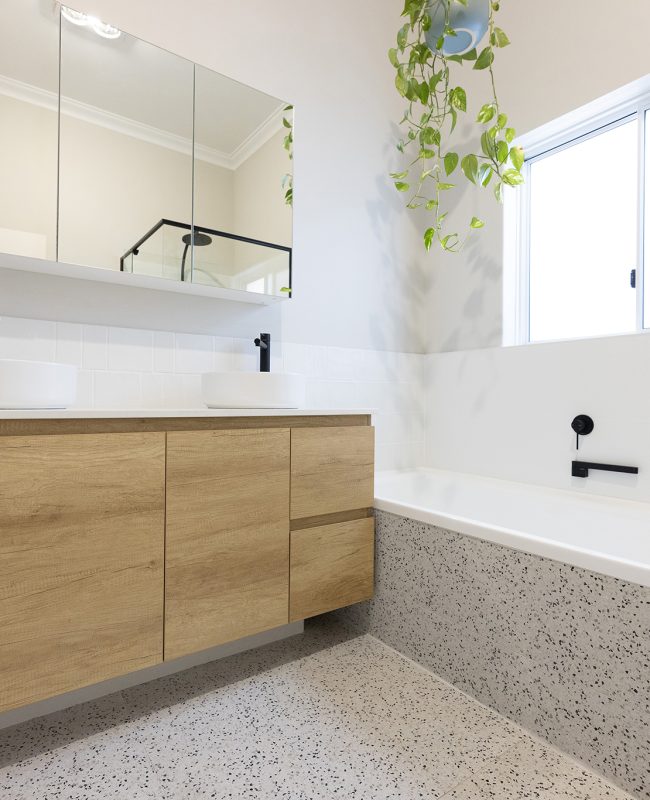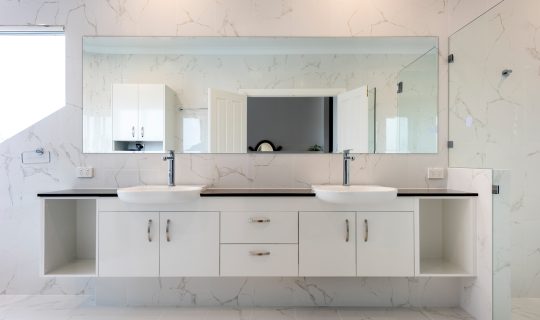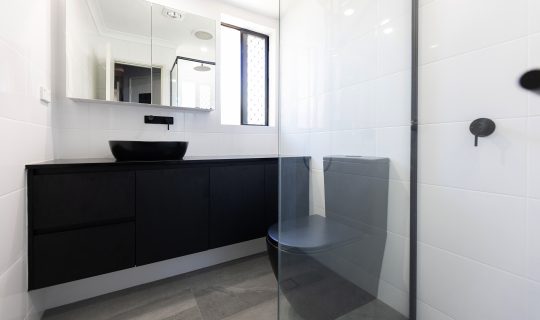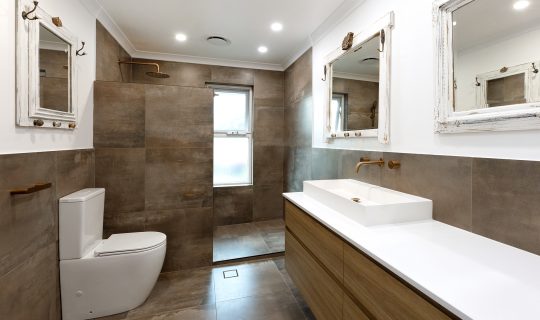The world is becoming more and more conscious about the impact that we make, which is having a flow-on effect on modern home design.
As global awareness of environmental impact grows, the world of bathroom design is undergoing a transformation. From materials used in renovations to the installation of fixtures that reduce your ecological footprint, eco-friendly practices are becoming integral to modern living.
WA Assett, the bathroom renovation specialists, can offer expertise in selecting sustainable materials and fixtures to create modern and unique bathroom designs without compromising the planet.
Here’s how we do it.
Conserve water with water-saving fixtures
In water-scarce regions like Perth, with our dry, baking summers, conserving water is important. WA Assett can install water-saving fixtures to help reduce your home’s water footprint throughout the year.
Dual flush toilets
Start your bathroom renovation journey by making a simple yet impactful change – replace your single-flush toilet with a sleek dual-flush system.
Traditional single-flush toilets can consume up to 12 litres of water per flush. In contrast, dual-flush toilets use only 3.5 – 6 litres, effectively halving your toilet water consumption. Choose from sleek models, seamlessly blending into diverse bathroom designs.
Low-flow shower heads
Another way to reduce your water use is by replacing your current shower head with a low-flow model.
Older shower outlets can use up to 23 litres per minute, and newer ones up to 9 litres per minute. And think about how many minutes you take in the shower.
Upgrade your shower experience while reducing water use by opting for a low-flow shower head. With a low-flow model, even at a reduced rate of 7.5 litres per minute, you can save thousands of litres annually, especially beneficial for larger families. The modern design ensures you won’t even notice the difference.
Go bathless
We’re not saying don’t bathe. Instead, consider removing your bath and only having a shower in your bathroom.
A full bath uses up to 180L – 300L of water. So even if you take a decadently long shower, you’re still saving over a third of the water as a bath.
And how often do you actually have a bath, anyway? Removing your bath and opting for a shower instead is a great way to reduce your water use, and create more space in your bathroom at the same time.
Choose sustainable countertop and vanity materials in your bathroom designs
Your countertops don’t all have to be white, featureless stone. It can be classy and minimalist, but doesn’t always suit your space.
Sustainable materials create an eye-catching look, while helping you reduce your material impact.
And while we don’t typically recommend solid timber for your bathrooms, due to its high maintenance requirements, it’s still a viable option for your vanity unit.
Recycled timber
Introduce recycled timber for a vanity that exudes a rich, luxurious feel. Whether light or dark wood, this material brings a touch of holiday home luxury to your daily bathroom routine.
Reclaimed wood
Luxe yet industrial, reclaimed wood vanities are a striking option for your bathroom renovation. You’re ensured of getting a unique, one-of-a-kind piece, while knowing that you’re saving materials from landfill.
Bamboo
Bamboo is one of the most sustainable building materials on the planet. It’s fast-growing, absorbs significantly more CO2 than most woods, and is low in emissions both in growth and crafting. Also inherently antimicrobial, while providing a warm, modern look, treated bamboo can be a strong contender for a more sustainable countertop option.
Consider energy-efficient measures
Your bathroom doesn’t just use water. As a regularly-used room, it’s also a big user of power in your home.
With a simple switch to energy-efficient lighting, you can help to reduce your energy consumption, while lowering your power bill at the same time.
Alternatively, if you’re doing a major bathroom renovation, consider boosting your natural light with the addition of large, airy windows. This can help to create the feeling of space, which provides more lighting to your room, without the need to increase your energy use further.
We can help you choose sustainable materials in your bathroom designs
Understanding that every bathroom is unique, WA Assett emphasises the importance of high-quality fixtures and materials designed to stand the test of time. Even small changes contribute to long-term energy, water, and cost savings.
The most important thing for your long-term energy, water, and cost savings is that you get high-quality fixtures, using materials that are made to stand the test of time, and installed by experienced professionals.
At WA Assett, we can provide expert advice on the sustainable materials that are going to work for your new bathroom design.
For personalised advice on sustainable bathroom materials tailored to your bathroom design, contact us to book your free bathroom renovation estimate today.




